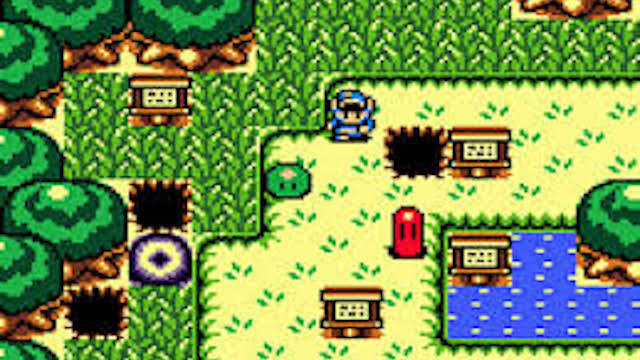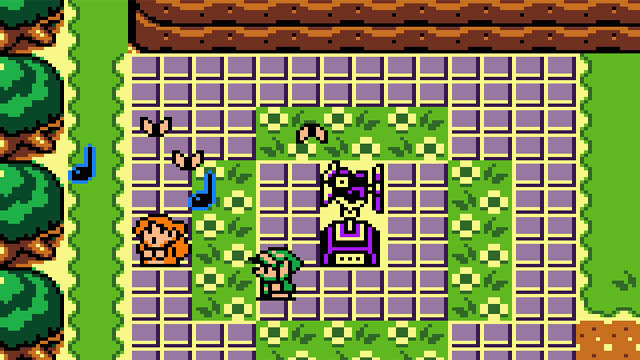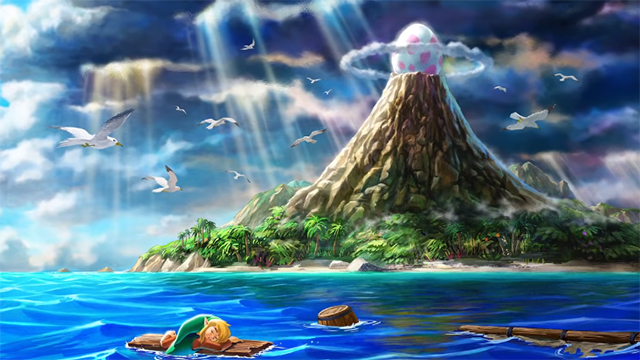When The Legend of Zelda: Link’s Awakening released in 1993 for Game Boy, it represented a lot of firsts for Nintendo. It was the first time that its beloved action-adventure series made the transition to a handheld device, which would later become a frequent home for the series. It also went against many of the expectations of the Zelda series, such as taking place in Hyrule and saving the princess. However, the biggest change of pace is that there was no underlying gimmick being used to sell it.
If you take a look at every Zelda game since the 1986 original, there is a gimmick that differentiates it from the rest of the series. The Adventure of Link had a side-scrolling perspective, Link to the Past had an entire dark world, and this trend continued into the 3D entries. Majora’s Mask is built around accomplishing tasks while a timer constantly goes down, while Wind Waker is all about sailing the dangerous seas. Even Breath of the Wild is built upon that idea by presenting players with an open-world that subverts expectations of a Zelda game.
However, The Legend of Zelda: Link’s Awakening doesn’t have any sort of gimmick attached to it. More than any other game in the series, the debut handheld entry feels like a pure successor to the legendary Nintendo title. Rather than having a twist to make the formula feel new, it merely stuck to what worked and made sure to refine it. It was far from revolutionary, but Nintendo still managed to wow gamers and critics alike when it dropped a full-blown Zelda title that you could play on the go.
Sometimes simple is better

By not having any sort of gimmick, Link’s Awakening focused on what everyone already loved about the series. This meant getting to explore great dungeons and gaining key items from them that could be used in later ones. From being able to jump over pitfalls to getting the awesome Hookshot, all of the in-game abilities offer up interesting changes that impact how the player interacts with the world. Every dungeon was also capped off with a great boss fight that challenged the player to put all their skills together and use their arsenal wisely in order to defeat them. Once again, while it didn’t break any new ground it offered a familiar yet satisfying experience that players wound up loving.
While not quite as huge as the overworld in The Legend of Zelda: A Link to the Past, the Game Boy title was brought to life with its great island locale. A sense of adventure and exploration is key to Zelda and players got to visit a brand new location that had plenty of surprises in store. From a bunch of talking animals that take refuge in a small village to its tropical beaches, Link’s Awakening has one of the most diverse worlds ever seen in a Zelda game. The fact that I can still recall most of its map despite not playing it in over a decade shows how memorable it is, and how Nintendo succeeded in crafting an overworld that mattered.
One of the reasons why Koholint Island is so memorable is due to its inhabitants. Rather than just being window dressing, every villager has a purpose to their inclusion. From giving key hints to being a shop vendor, nobody is merely thrown into the world without a reason. Many of the characters wind up taking part in its lengthy fetch quest. It has humble beginnings as it starts with just giving a stuffed animal to a father of four. However, it winds up being incredibly important as it ends with getting a magnifying lens that reveals how to complete the final dungeon
It’s Zelda at its core

By not having any sort of gimmick to it, The Legend of Zelda: Link’s Awakening feels instantly familiar to the player. Despite being set in a mysterious land and starring a cast of fresh characters not from Hyrule, players know exactly what they have to do after the opening cutscene: find a sword and make their way to the first dungeon. This simplicity gives the title a laser focus and one that is instantly recognizable by anyone with a passing knowledge of the franchise. Considering the somewhat rudimentary gameplay of the original NES game, Link’s Awakening is Zelda in its most pure form. Every expectation that one has from the series is met, and there’s no sort of added ingredient that proves divisive. As such, it’s one of the few games in the long-running series that is held in high regard by everyone.
Another feather in Link’s Awakening‘s cap is that it has some of the best storytelling in any Zelda game. Despite not having a wordy script, the simple story of washing up on an island and having to figure out its many mysteries is one that resonates. The island is filled with fun characters and the charming cast never fails to give the player a reason to continue on. The truth has to come out, even if it isn’t something that all the residents are thrilled with. The Game Boy title’s twist ending might make some players think that their journey was meaningless in the grand scale of things, but the fun that was had makes it impossible to ultimately feel that way for long.
Nintendo isn’t known for super complicated titles and their less is more philosophy shines in The Legend of Zelda: Link’s Awakening. It represents everything that is great in the series in one easily digestible package that everyone can enjoy. It is Zelda at its core form and untainted by any attempts at innovation or change. That’s why it is great that the Nintendo Switch remake will let an entirely new generation of players enjoy it. After all, going back to basics is exactly what is needed after the significant and divisive changes made by Breath of the Wild.







